Gary Green has been teaching photography since 1994. He is currently assistant professor of art at Colby College in Waterville, Maine. Nationally, his photographs have been featured in solo and group exhibitions at the University of Nevada, Reno; Texas Tech University, Lubbock, TX; Paolo Baldacci Gallery in New York City; the Amon Carter Museum in Fort Worth, TX; Gallery Kayafas in Boston; and Safe-T-Gallery in Brooklyn, NY’s DUMBO arts district. His work has also been featured in the publication Blind Spot. His work is in the collections of the Museum of Fine Arts in Houston, Texas, The Amon Carter Museum in Fort Worth, Texas, and in Maine at the Bates College Museum of Art, the Portland Museum of Art, the Bowdoin College Museum of Art, and the Colby Art Museum, among other institutional and private collections. His work is in the collections of the Museum of Fine Arts in Houston, Texas, The Amon Carter Museum in Fort Worth, Texas, and in Maine at the Bates College Museum of Art, the Portland Museum of Art, the Bowdoin College Museum of Art, and the Colby Art Museum, among other institutional and private collections.
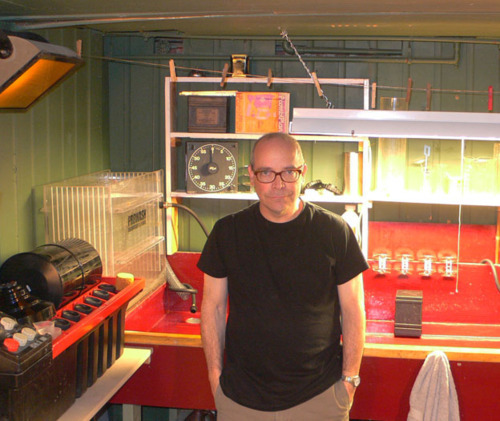
© Gary Green in his darkroom
Gary- can you briefly describe your career- how did you get to Colby College? What was your first teaching experience? What directed you towards a teaching career?
Gary Green (GG): I was always a “maker” but turned to photography when my aunt, who worked for Zeiss Ikon in New York, brought me a set of 20 slides that the company had issued in honor of the U.S. moon landing. Something about the quality of light passing through the slide film captured my imagination and I was off and running. I assumed right away I’d pursue it through school and beyond but had no specific plans or direction until I completed the end of the first part of my higher education career and moved to New York City in 1977. This was the height of the punk music movement and the attending excitement. I worked for many years in New York as a photographer’s assistant, proof reader, custom black-and-white printer – whatever I could do to make ends meet (they often didn’t) – and on my own work, which had quickly become entangled with my interest in the music and art scene happening downtown at that time – Max’s Kansas City, CBGB, etc. were part of my routine and practice. I would work by day, go at night to photograph people and hear music, and then return to the studio, where I would process film and print late into the night before beginning another day. My craft grew quite a bit at this time. As this became routine, and in many ways a burgeoning profession, I again longed for growth as an artist. I took classes, most notably among them, a master class at the New School with Lisette Model. She was tough but charming. After about ten years of getting by, it became clear that I needed another way of making money and I also needed to find maturity in my work that could sustain me for a lifetime.
My wife and I left New York City in 1986 for Tivoli, NY, a tiny hamlet two hours north along the Hudson River, where I subsequently began my graduate studies at Bard College and decided that teaching photography was a way to potentially sustain me economically and intellectually. I need to be challenged constantly, so between teaching and working, I can always explore fresh questions and ideas.
My first teaching experience was at Dutchess Community College, where I taught three or four sections of Photo I for a year. My first full-time position was as a visiting instructor at Missouri State University in Springfield, Missouri. Being in the Midwest was a fine experience for the three years it lasted. It allowed me many short and long trips to the plains and prairies, my subject matter during that time. However, I do not miss the big storms and conservative politics of that region!
After that was Maine where I managed to string together a series of teaching assignments including two brief stints at our sister colleges Bates and Bowdoin. I came to Colby in 2007.
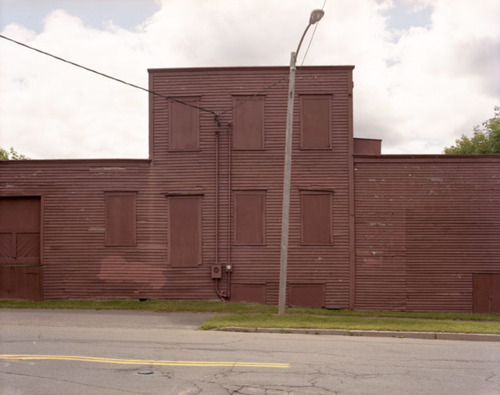
© Gary Green from the series 'Central Maine', Waterville, Maine, 2010
Since this is a series of interviews that discusses the current state of photography education, could you please introduce us to your program at Colby College. The size, the number of students, what classes you teach, the students’ demographics?
GG: Colby is a liberal arts college with a small art program that serves the college’s mission of providing a liberal education. Approximately 1860 students attend Colby at one time. We generally have about 60 or so art majors and about 50 minors at one time. My classes usually have between 12 and 15 students each. I teach Photography I through III, which includes analog, digital/color, and advanced classes, along with more advanced independent studies, an introduction to digital imaging, and a course on non-silver processes.
Like many of my colleagues at small colleges, we have one person teaching in each area so I am responsible to make each student feel welcome and engaged. Because of the limited viewpoint of having one professor, it’s important that I do as much as possible to support a wide range of ideas. I do make sure to open up other avenues so that students get a variety of viewpoints. We do that through readings, viewings of work in books and exhibitions, and by bringing in at least one photographer each year to speak and meet with students. In past years I’ve been able to have Chris Killip, Mark Steinmetz, John Divola, and An-My Lê to Colby. Thanks to the collaboration and support of our museum, next year we are fortunate to be able to bring two: Lisa Kereszi and Andrew Moore. A couple of years ago, John Coffer, who lives off the grid in upstate New York and documents his life making tintypes, came and spoke about his work, of which the museum had recently collected a large cache. John must have brought an entire mule-team’s worth of all kinds of collodion products and equipment to do a demonstration of the process for my class. “And he didn’t just come on his own actually. We hired a student who drove nine hours each way to pick him up and again to bring him home. It was a labor of love for all involved, including John.
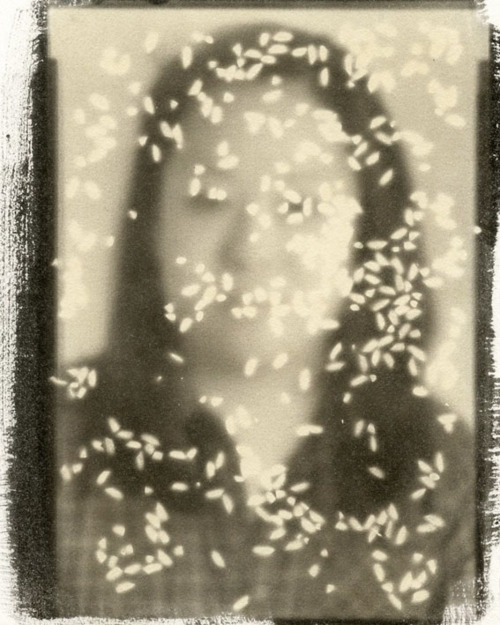
Gary Green student’s work: Emiko Boezeman, Palladium print
In the fall of 2013 the photography studio (which is strictly analog – I currently teach digital courses in a media lab in the art library) will move into a new facility that will house a full analog darkroom and a full digital studio in one space. Since first teaching digital photography, I have dreamed of teaching it in a facility that resembled and functioned like an art studio rather than a computer lab. Our new space will accomplish this. The photography facility is housed within the art and museum buildings at Colby so we have a wonderful collection of objects and books that are available to us without stepping outside.

Gary Green student’s work: Elizabeth Hathaway
As far as demographics go, in general, Colby’s students are often from New England, particularly the Boston area and Maine. But, we have students from all over the world – I had a student this semester from Ukraine, one last year from Belgium, many from New York and California, etc. In addition, our international base is growing rapidly as is the population of students of color from both the U.S. and abroad. Colby is actively recruiting a more diverse population and that’s beginning to show itself in very positive ways.
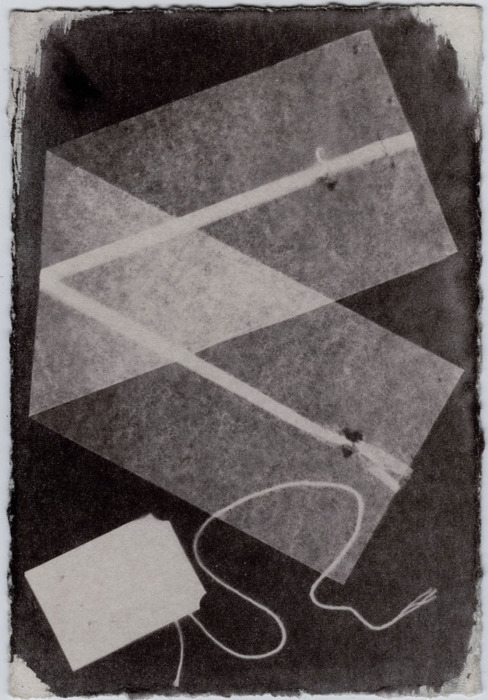
Gary Green student’s work: Caroline Southwick, toned cyanotype
I have taught in professional programs at art schools and universities as well as in liberal arts colleges. What I like about the liberal arts environment is that our students bring a rich dialogue to their art making. Some of my students are art majors and/or minors but many are just as often enrolled in biology, sociology, international studies, or French. They bring a lot of other intellectual ideas to the table and that makes the potential for their creative work that much richer. I have little interest in teaching a student (nor could I, if I wanted to!) how to make art based on the terms that already exist in what we refer as the “art world.” I am interested in questions and dialogues from students. I’m not really teaching them to be artists per se (that’s their mission after graduating if they so choose) but rather to be visually literate; to see and to think critically.
Your publication History starts with your explanation that the title comes from a book hand-bound by your father. Your desire to work with your hands and your love of printed matter is evident in your images featured in this quiet and introspective body of work. How do you relate to your students the need and power of hand- made process?
GG: From the beginning, I emphasize the word “making” rather than “taking” as it refers to the “capturing” part of photography. It might be merely semantics but I think the implication is important. In beginning classes I always spend a good deal of time discussing the concept of time. I want students to consider the idea that they are “time collectors” in a sense. It gets them to reconsider the general notion that photography is simply about the click of the shutter and that’s it. The act of focusing is important as well and I encourage them to take their time. Each of the assignments in Photography 1 considers the vocabulary and grammar of making photographs including using the shutter speeds, understanding depth of field, understanding the importance of the frame, etc...
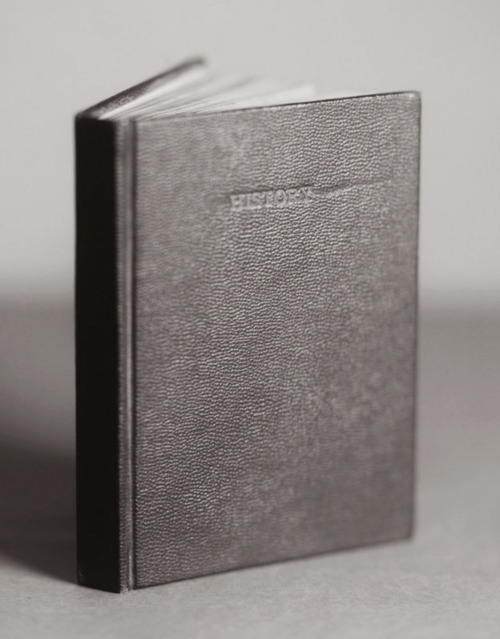
© Gary Green, cover of the book 'History', 2010
Beyond that, I encourage them to work with an eye toward process and not goals. I support their journeys and failures. I constantly exhibit my own enthusiasm for the pleasure of going out with a camera, making images, developing the film, and embracing the results; success and failure are both good teachers. Besides, coming to me as children of the digital age, they are already more impressed by traditional black-and-white images made with their own hands. They very much take for granted the digital images they’ve made on their own for years. At Colby, I insist they start with Photo I, which is strictly analog 35mm photography, gelatin silver prints, etc. The students who succeed – and most of them do – are quickly enchanted with the darkroom time – the darkness, the meditative aspects of spending some long hours working very hard to make one decent image. I encourage them to slow down! Beyond the darkroom, I also stress the potential of printmaking. We discuss the differences between images and objects – photographs can be one or both. Understanding that is critical.
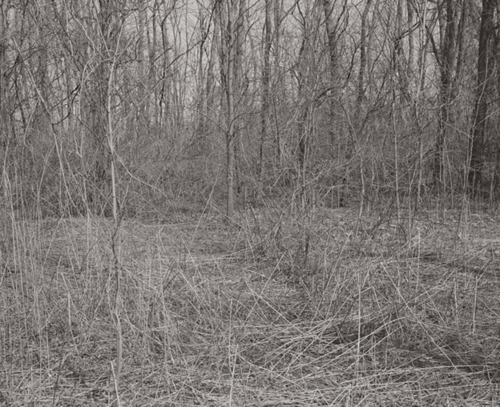
© Gary Green from the series 'Terrain vague', Untitled 2011
Can you discuss the relationship of digital photography with an artist’s need to create something with our hands? What is your approach to that relationship in your classes?
GG: Even in my digital photography course, the students use film. They shoot film, scan it, process it in Photoshop and print it digitally. I spend a good deal of time discussing the print – the final object in many cases (although, we surely look at and consider the online image as well). I show them some of the photographs I’ve made using 8x10 negative film, which are digitally “toned” and ultimately printed onto a nice paper stock. We look at paper choices, etc. I am very enthusiastic about the possibilities we have right now in this time to use any of nearly 200 years of processes and in any combination. I make it clear that they are still making objects.
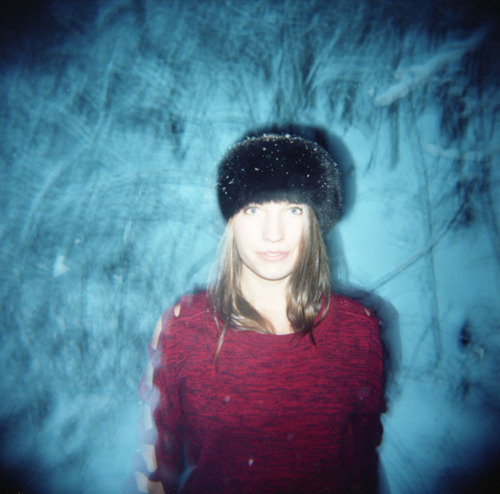
Gary Green student’s work: Hopestill Kraft
Further, I often give them an assignment that takes them from the 19th to the 21st century. For instance, I may have them photograph using paper negatives from a 19th-century studio view camera and then scan the negatives into Photoshop. We look at Talbot’s photogenic drawings, calotypes, salt prints, etc. for inspiration and ideas. I also have them make their own small photo books – again, another hand-made item. We study some great examples of photo books throughout history. The Gerry Badger/Martin Paar books are a great resource for that (The Photobook: A History, volumes. 1 & 2, Phaidon).
Does the development of technology, present in the development of photography as an art medium, hinder a student’s understanding of hand-made art?
GG: I have a colleague who offers a wonderful history of photography, which is required for my majors and minors. I encourage all my students to take it. In my own classes, history is never far away and I make sure students see what historical objects look like, from Daguerreotypes and salt prints to C-prints and pigment prints. A couple of years ago at Colby I was able to curate an exhibit entitled “From Salt to C-Print,” which included examples from a variety of collections. We actually had a Talbot salt print we borrowed from Bowdoin, historical Daguerreotypes as well as two contemporary ones by Chuck Close, and so on, through contemporary work by Mark Klett, William Christenberry, and Stephen Shore. It was a terrific chance for students to see the rich nature (and color) of photography from 1839 through the 1970s. So the connection of image to object is an important one in my book and I think it goes a long way in teaching the importance of making things with your own hands.
In my non-silver course, we do very little work with cameras so for most of the processes we use – particularly cyanotype and photogenic drawing (which I learned last year at Lacock Abbey under the tutelage of Mark Osterman and France Scully Osterman) – the students are coating paper, collecting objects, and making camera-less images. The course is called “A Historical Introduction to Photography” and it’s essentially a hands-on history course. Generally, the students find the alchemy of these processes very exciting.
Photography has always been both criticized and celebrated for its technological qualities that make it unique in the world of art. It’s a given. It’s both an intellectual pursuit as well as one that involves craft. I personally love the combination and try to pass that enthusiasm on to my students.
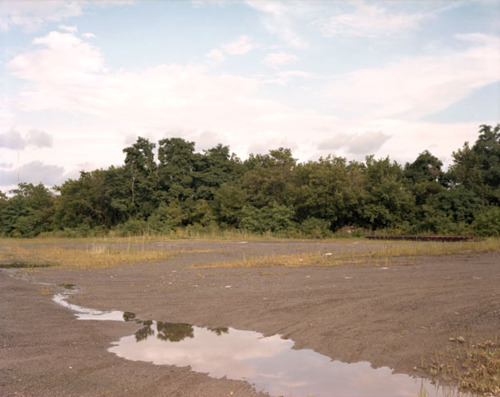
© Gary Green, from the series 'Central Maine', College Avenue, 2010
Your 'Real Estate' and 'Central Maine' series recall the themes of The New Topographic exhibition (Curated by Bill Jenkins, George Eastman House, 1975). The contemporary American landscape is a very prominent subject in today’s photography. Could you address this resurgence of interest in urban environments?
GG: I have at least a couple of theories on that I can throw into the discussion, of course, my own interest is personal and reflects an interest in the vernacular landscape that I’ve had for many years now. As far as current trends go, one idea, and perhaps the one most related to this series of interviews you’re doing, Daniel, would be that many of us are students – directly or indirectly – of that previous generation of photographers. I studied with Stephen Shore in graduate school and I am one of numerous students of his from Bard out there in the world making photographs. The Bechers created their own army of potential topographics-type landscape photographers as well. Frank Gohlke and Joe Deal have also taught for many years. And Robert Adams has taught many of us through his quietly powerful photographs, books, and essays on photography. So we’re seeing a generational resurgence coming from many of us who are just a bit younger than the New Topographics photographers. We grew up studying them, looking at their work, and applying what we took from it to our own practices.
Beyond that, though, we’re also seeing the other side of the developed landscape. Adams, Lewis Baltz, Deal, etc., who all photographed the boom and explosive development in real estate in the1960s and 70s laid very solid groundwork for a more comprehensive study. Now we already see the legacy of that development; the depletion of those subdivisions, industrial parks, strip malls, etc. This is the landscape we live in, that I am interested in, that describes part of the human condition. I think it’s our job as photographers to make pictures of the world that hold the most meaning for us. If you’re interested in landscape, then you’re probably interested in history in one aspect or another. This type of topographical history is one possibility that many of us feel compelled to explore and examine in depth. It is clearly a very timely topic.
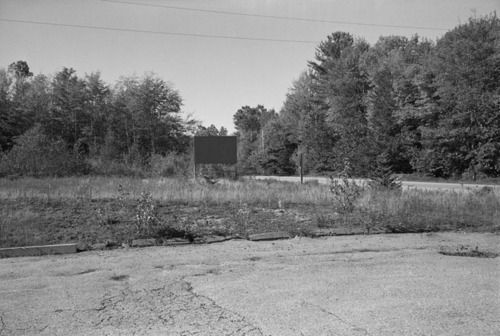
© Gary Green from the series 'Terrain vague', Untitled 2011
The real estate photographs you mention are really just a collection of pictures I make all the time of my environment. I called a group of them “Real Estate” because that seemed to embody what was on peoples’ minds at the time when things were booming out of control. I thought I was being a bit ironic but now that real estate has turned to a tragic subject, some of that irony is stripped away. I don’t really mind, they work for me on many levels. I’ve continued to explore the same themes with the Central Maine project and a new series I’m calling Terrain Vague after the term coined by Spanish architect Ignasi de Solà-Morales. I’m looking at urban spaces that for one reason or another are not quite part of the planned environment. It may because they’re a little visual stutter in the city plan or because a business has gone under leaving a decaying building, or it may be, most literally by Solà-Morales’s definition, the edges of a city that essentially remain unorganized, unplanned, or otherwise oblivious to any considered plan. I’ve always been interested in these very vague and seemingly unimpressive spaces. When I was in graduate school, some of my colleagues referred to my photographic subject matter as “nothing.” That stuck with me in the best way. I continue to photograph as much “nothing” as I can.
---
LINKS
Gary Green
United States
share this page
